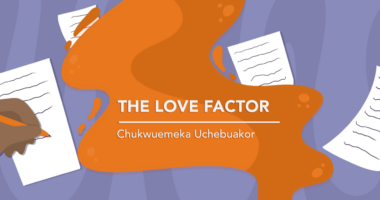Conductor Training Can Help You Manage Parkinson’s Symptoms

Conductor brain training has made living with Parkinson’s disease easier for me.
The most amazing thing I discovered while using what I call “the conductor” is that signals coming into my brain are sometimes distorted. This distortion can take place in the form of signal amplification or suppression. If I react to this distorted brain input as if it were real, there will be consequences that will steal time away from my rehabilitation work.
The second most amazing thing I discovered was that I can use my brain — specifically the conductor — to help manage symptoms.
Before I got Parkinson’s disease, I was an upbeat, positive guy with no signs of depression. Like so many others with Parkinson’s, I have had to deal with input into my brain that feels like sadness. But when I use the conductor, I see from that view that there is nothing behind the sadness. There is no context. That’s the disease speaking.
My brain wants to make context. That’s what the brain does. If the conductor were not in place, I’m almost certain it would do so. Instead, the conductor provides a fresh look at depression. This is a big deal for me. It is this shift in perspective — seeing the input as exaggerated — that has made a big impact.
The conductor helps us with the daunting tasks of learning how to do things all over again, even simple things like walking or eating. The conductor also is useful in helping me cope with more Parkinson’s symptoms than just depression. A well-trained conductor also can help with the following:
- Appropriate exercise and fall prevention using mindful movements
- Managing chronic pain
- Decreasing impulsivity problems
- Improved mouth motor movement
- Getting through bad days and off periods a bit more easily
When I put the conductor in place to help with these symptoms, I find I am replacing old coping skills with new ones. I am fixing the “flat tire,” so to speak, by retraining my brain, which results in a higher quality of life.
Learning how to use the conductor to help alleviate symptoms takes practice — lots of it. Additionally, it’s important that this practice happen by using a well-prepared brain. It is not easy to focus sustained attention on using the conductor while simultaneously engaging in life. I have found that exercise, little-things practice, and CHRONDI wellness mapmaking practices all contribute to preparing my brain for engaging the conductor.
The counting breath exercise, which I explained in last week’s column, is an easy way to be introduced to the conductor. It’s important to follow the instructions as given. Of special importance is the intent held while doing the exercise. The conductor is nonjudgmental, kind, and curious without causing harm.
It also is important to make a mental note of the intrusions that result in losing count of the inbreath. Store this in memory and then go back to the counting breath exercise. You will retrieve this useful information later.
There is also useful information in how many numbers are counted in the outbreath. After you have done the counting breath exercise for a few weeks, you may discover that the amount of numbers counted in the outbreath changes. Noting what affects these changes is important conductor brain training information.
There are times when this exercise and the conductor function poorly. These are when one crosses the emotion-management threshold or enters the darkness, when deep fatigue sets in, when the brain is flooded with unhealthy chemicals (such as alcohol or a poor medication choice), or when there is a brain injury.
My wellness map includes instructions for me about how to avoid these dangers. Now I practice those instructions. Sometimes I succeed and sometimes I fail, but I always revise the wellness map accordingly.
This use of the conductor as described here is a mental construct I use to help with the management of Parkinson’s symptoms. It is my way of describing self-care. It’s a case study of one person and needs to be evaluated accordingly.
There are single case studies in the annals of brain science that have made an impact, such as Phineas Gage, who in the mid-1800s survived after an iron bar blasted through the front part of his brain, and patient “H.M.,” who had his hippocampus (a structure in the middle of the brain) snipped in the mid-1900s. Science learned from these survivors of freak accidents and experimental procedures.
Anomalies become helpful to science only when we take the time to examine them.
***
Note: Parkinson’s News Today is strictly a news and information website about the disease. It does not provide medical advice, diagnosis or treatment. This content is not intended to be a substitute for professional medical advice, diagnosis, or treatment. Always seek the advice of your physician or another qualified health provider with any questions you may have regarding a medical condition. Never disregard professional medical advice or delay in seeking it because of something you have read on this website. The opinions expressed in this column are not those of Parkinson’s News Today or its parent company, BioNews, and are intended to spark discussion about issues pertaining to Parkinson’s disease.







Comments
Mike Hoisington
I like the flat tire illustration. In my car, I carry a tire repair kit that fixes most punctures. I need to carry a repair kit to fix my trying to find meaning to an intense emotion. The key to using the repair kit is practicing daily fixing the flat tire. Each day, I write in my journal a humble reflection of my trying to attach meaning to some emotion. I also write down a deliberate plan to do something different. Without the reflection and plan to change, it is like driving without a repair kit or spare tire.
Dr. C
Hi Mike ~ Thank you for your reflection. There are two additional things to consider. First, realistically no one is going to be able to keep the conductor in place 100% of the time. What that means is, we have to consider what we're going to do on those days when we can't keep the conductor working the way we would like. Second, once you start figuring out why you can't keep the conductor working, then you move beyond just fixing the flat tire.
Dr. C.
Derek C. Marshall
PD requires some special thought, such as the use of the conductor. Although I do not have PD, it appears the use of such structural thinking would be very beneficial if applied to the aging population in general. Aging itself, possibly, brings with it some of the burden that Dr.C discusses for the PD afflicted. Indeed, sometimes it seems difficult to separate the two.
Dr. C
Hi Derek ~ The problem with answering your question about age vs. PD is that the current science doesn't provide enough information about why the variability in PD exists. If we can't answer why the variability exists, then we can't clearly address the distinctions between age and PD. It is, however, a good topic and one I hope to address in the future.
Dr. C.
heather
I am getting worse and I feel like I have failed somehow. I should be doing better than I am. Does anyone else have the same problem?
Dr. C
Hi Heather ~ Thank you very much for this post. It gives me a chance to say something because I agree with you totally. Even though I've done all this research, and I've slowed my symptom progression, it is still progressive. Bad days are still bad days. And I champion "possibilities for Parkinson's", I feel like I am sometimes a failure to myself and to the cause I advocate for possibilities. In the columns I'm developing for October through November, I will be discussing how, with Parkinson's disease, there is a big difference between how we feel and the nature of the reality around us. There is a way to get around the illusion created by Parkinson's.
Hope you continue to read my columns and check in with Parkinson's News Today for other comments and columns.
Dr. C.
Teena
My dada has had parkinsions for a lot of years madipare worked well on dad with some medical ca nnabis now it js a diseasd that needs a bfeak through with things that work and this medicine works for my dad my dad did not want brain ops
Dr. C
Hi Teena ~ I will be expanding on the ideas I've presented in previous columns. Hope you check in to Parkinson's News Today and follow along. Maybe some of the information will be helpful for you and your dad.
Dr. C.
Timothy Wade Merrihew
Interesting article for me as I have had Parkinson's Disease since the spring 2009, when I was initially diagnosed. Also I had Deep Brain Stimulation (DBS) performed on February 2, 2017; unfortunately, shortly after I received the DBS, I went through a Divorce from a marriage of 26 years, so what I've experience is not unusual for folks with Parkinson's Disease, but I believe things are not hopeless, but I believe they could be better with right mind as the Conductor is described in the current article because I believe I already use this strategy; however, I don't believe I have reach the full pptential of this strategy, and this why I would like to get more specifics on this strategy to further engage in using the strategy to improve my overall quality of life.
Thank you very much for sharing this material and thank for your time, help, cooperation and understanding.
Best and kindest regards,
Tim Merrihew
Dr. C
Hi Timothy ~ I'm very glad to hear that you think the concepts of the "conductor" help with your PD symptoms. I am going to be expanding this concept and ideas in upcoming columns. I hope you will have a moment to read along. You should be able to get the specifics you are seeking on how to use the conductor by reading my upcoming columns.
Trying conductor/exercise training, in my opinion, needs to be an individually tailored approach. I would be interested in knowing what success or challenges you have with the idea.
Wishing you the best, Thanks for reading my columns and checking in with Parkinson's News Today.
Dr. C.